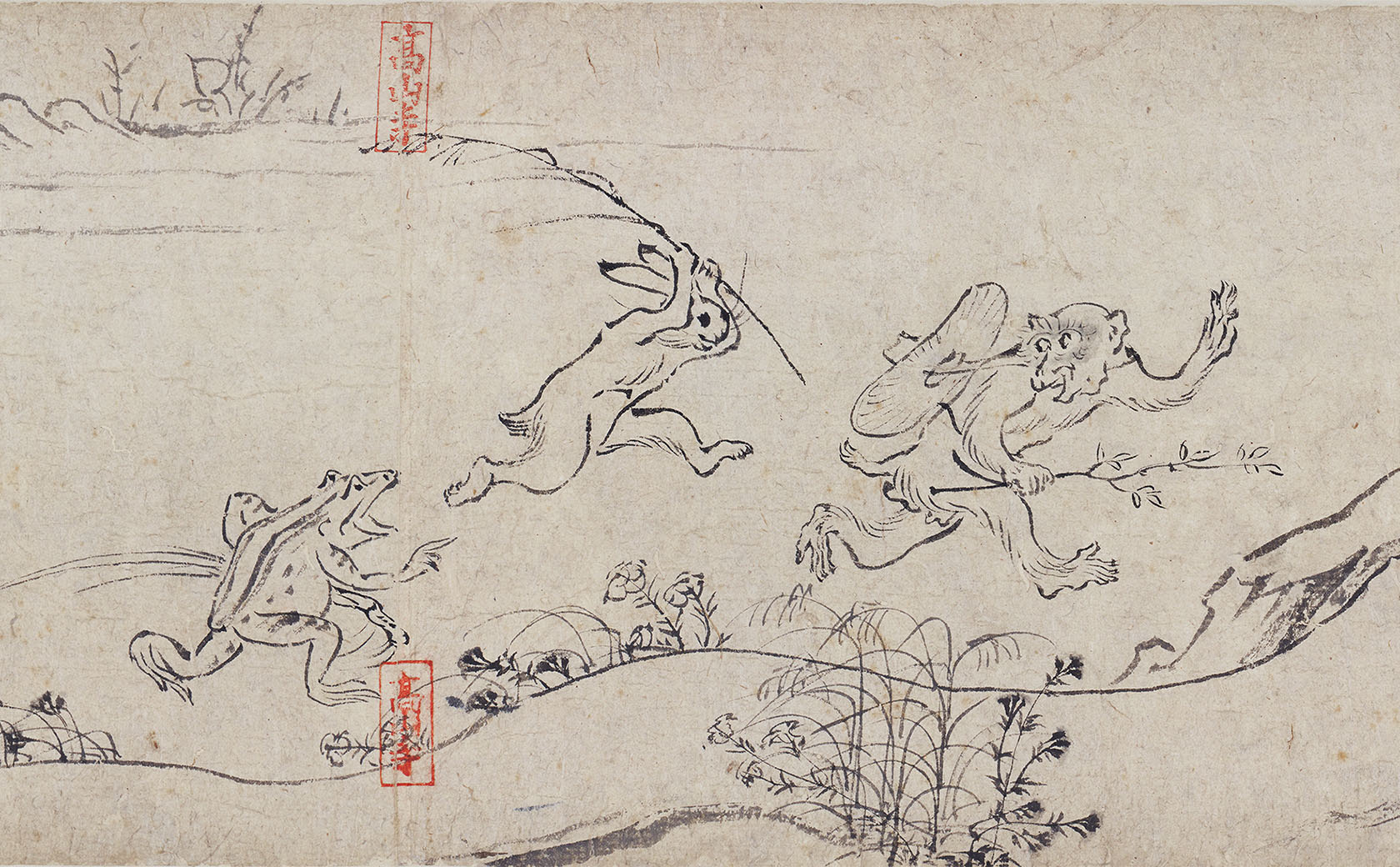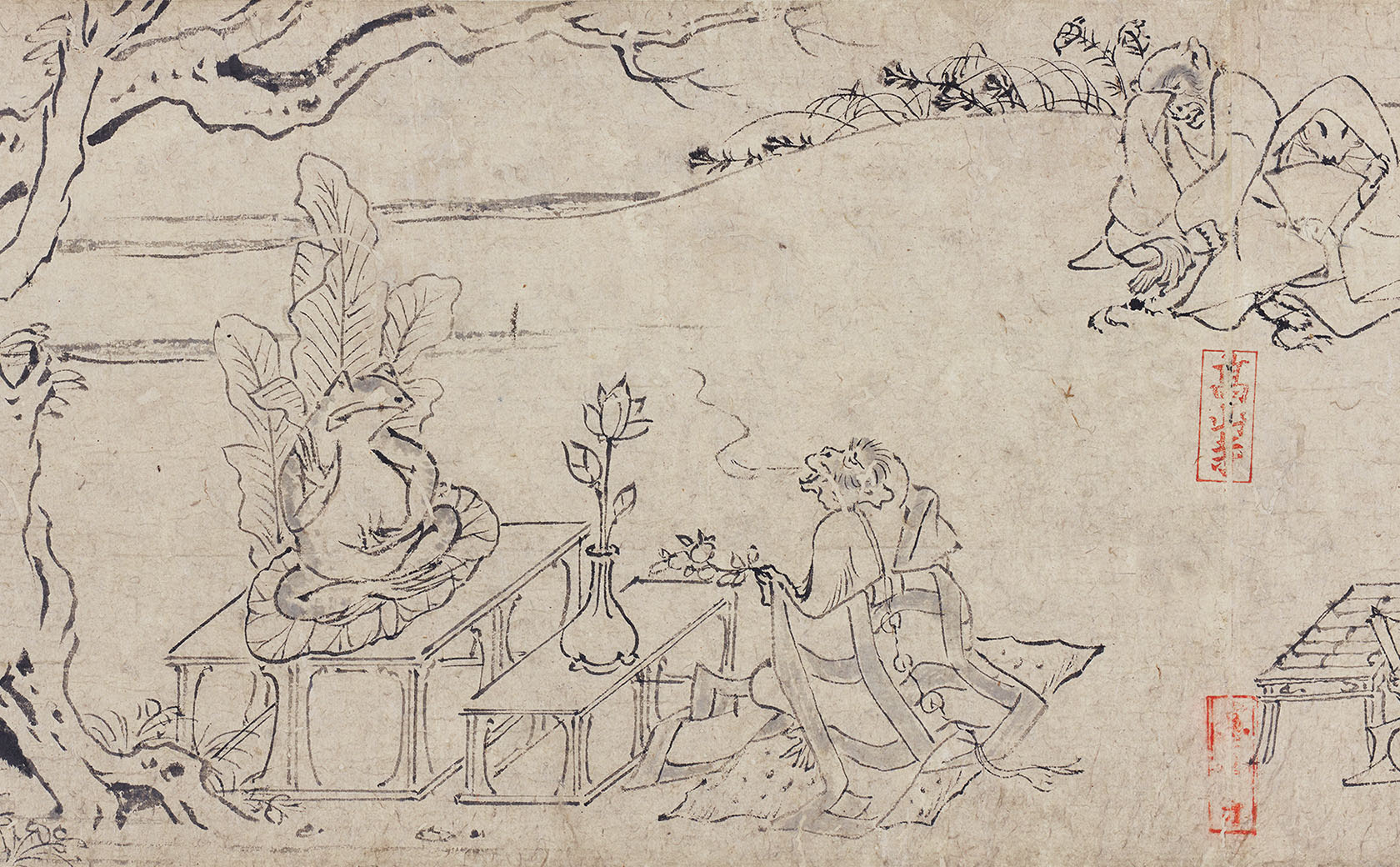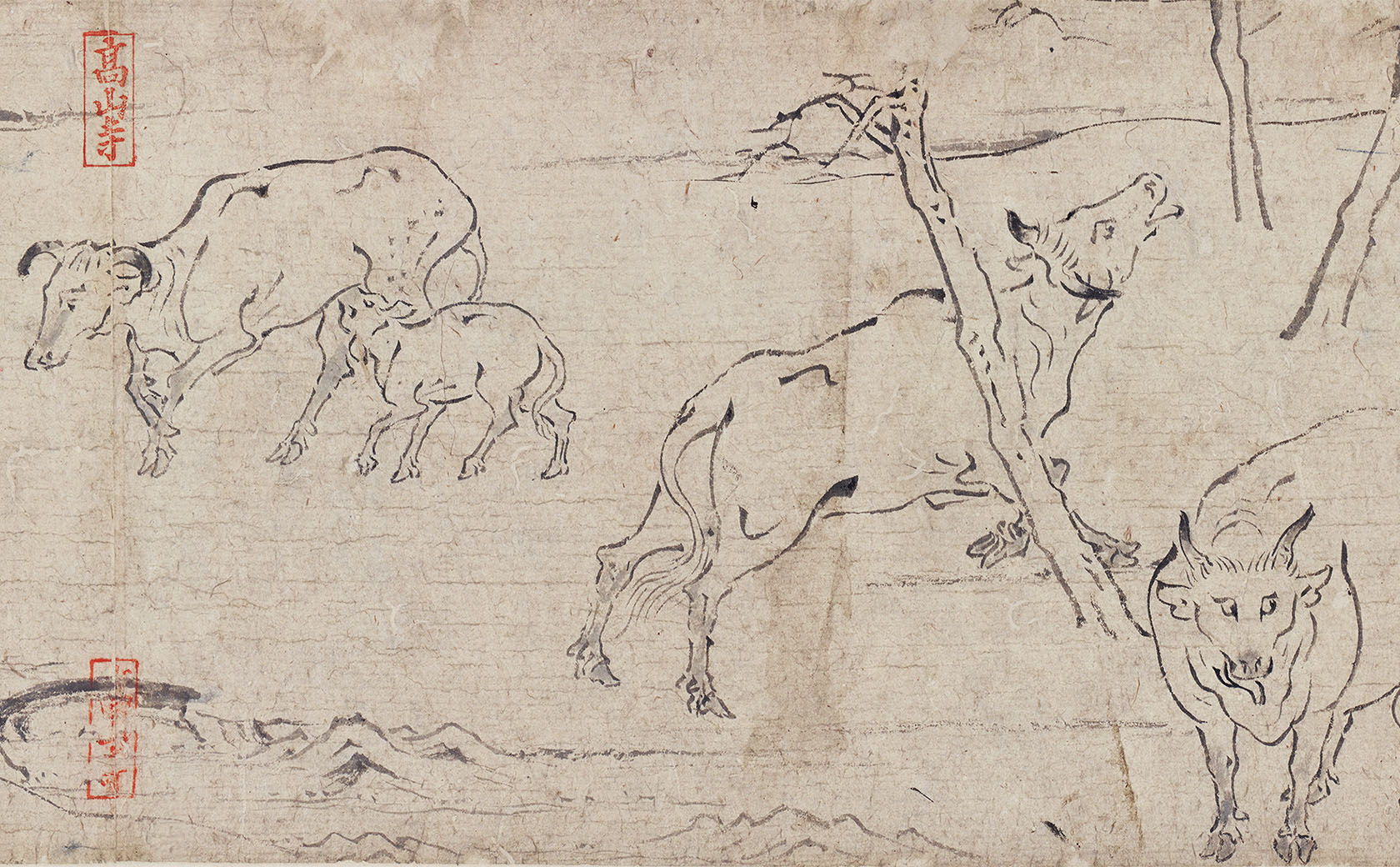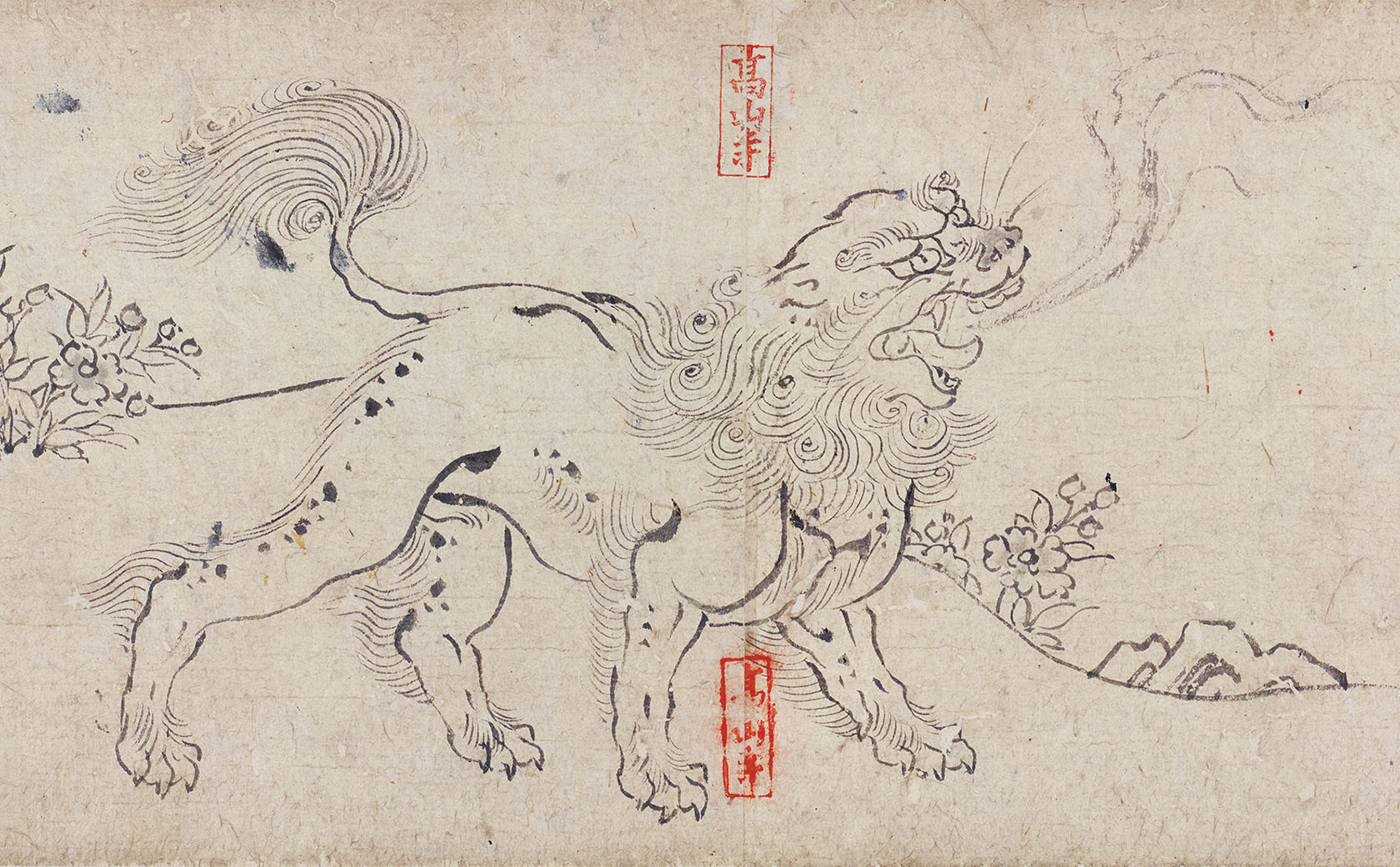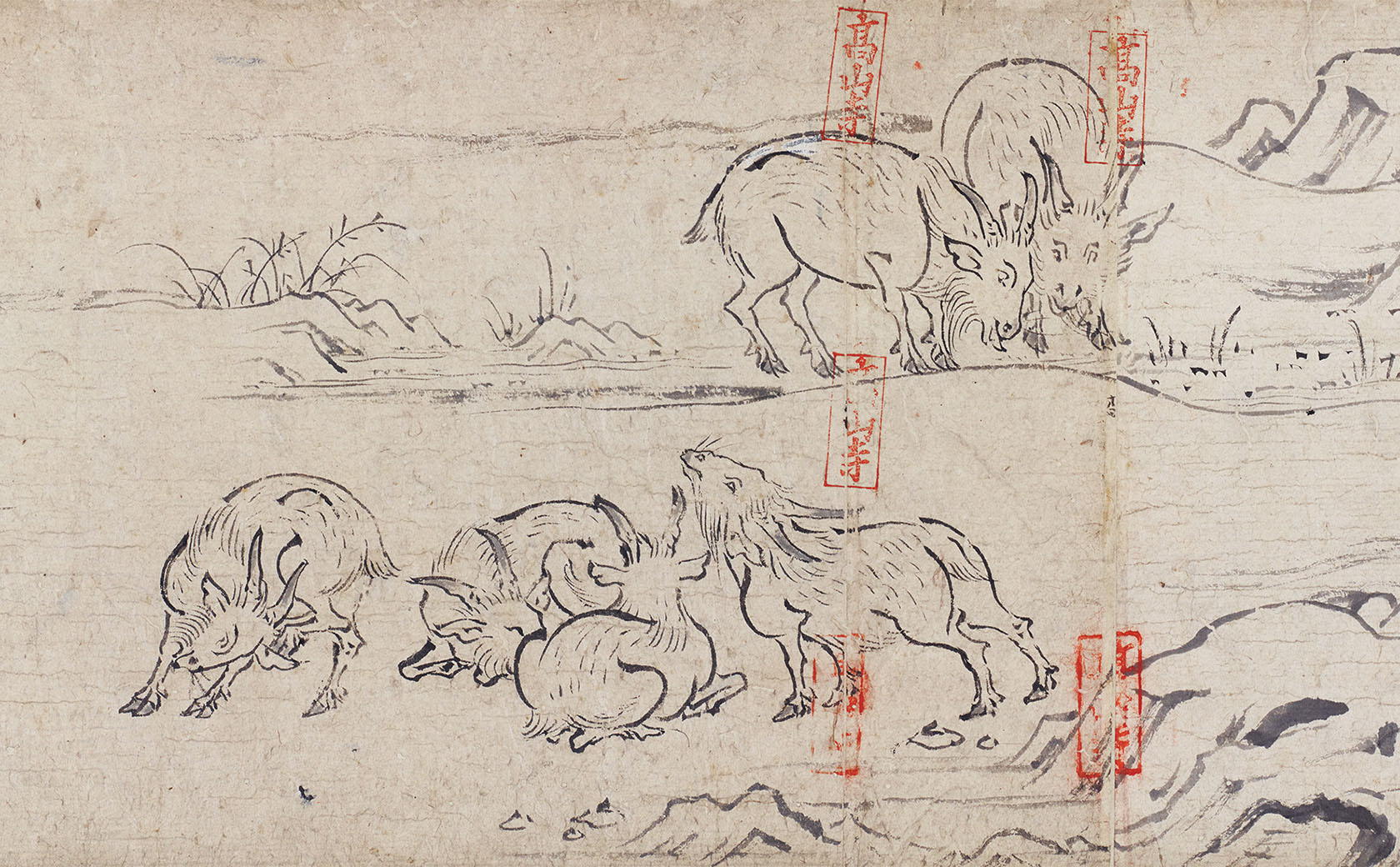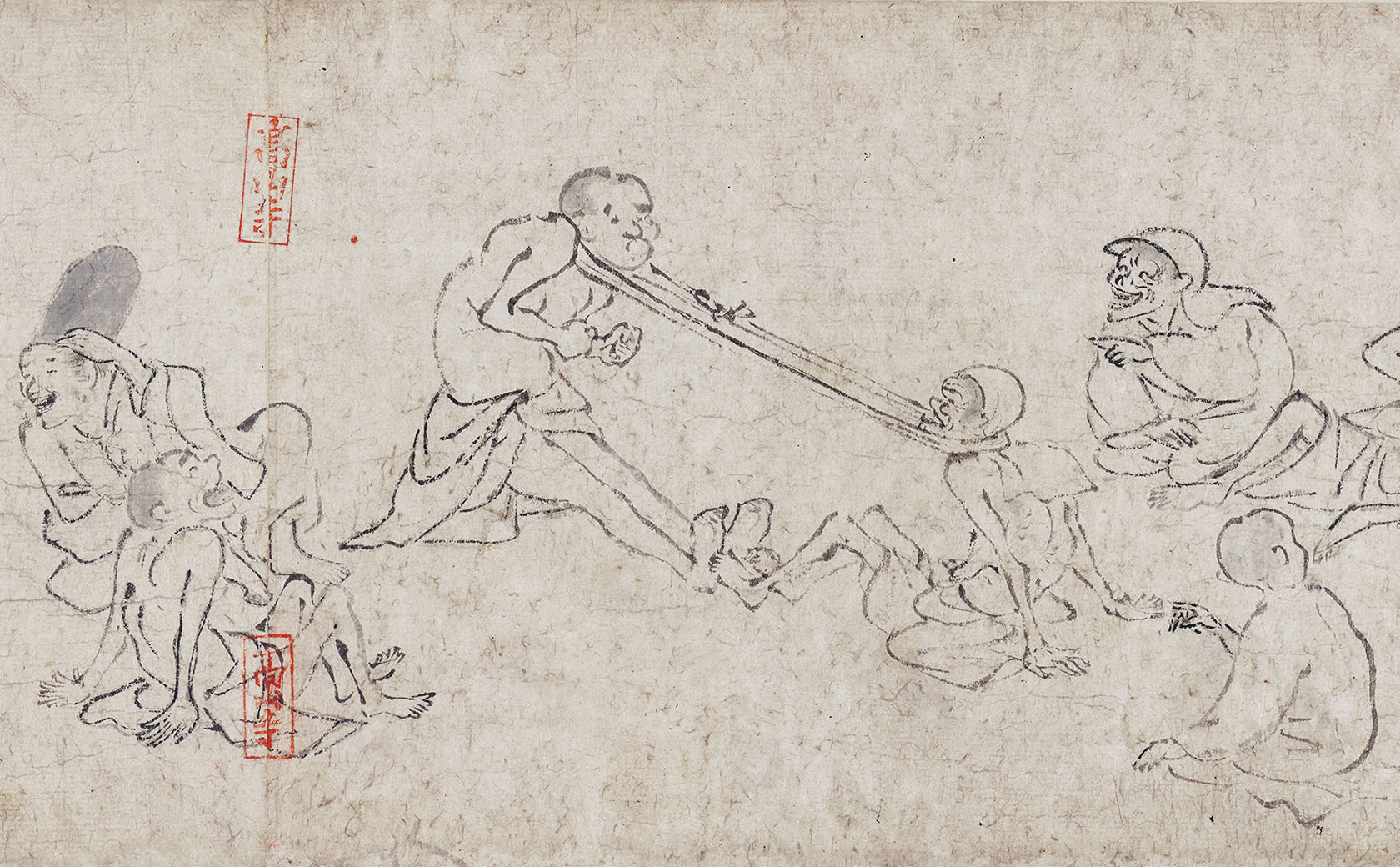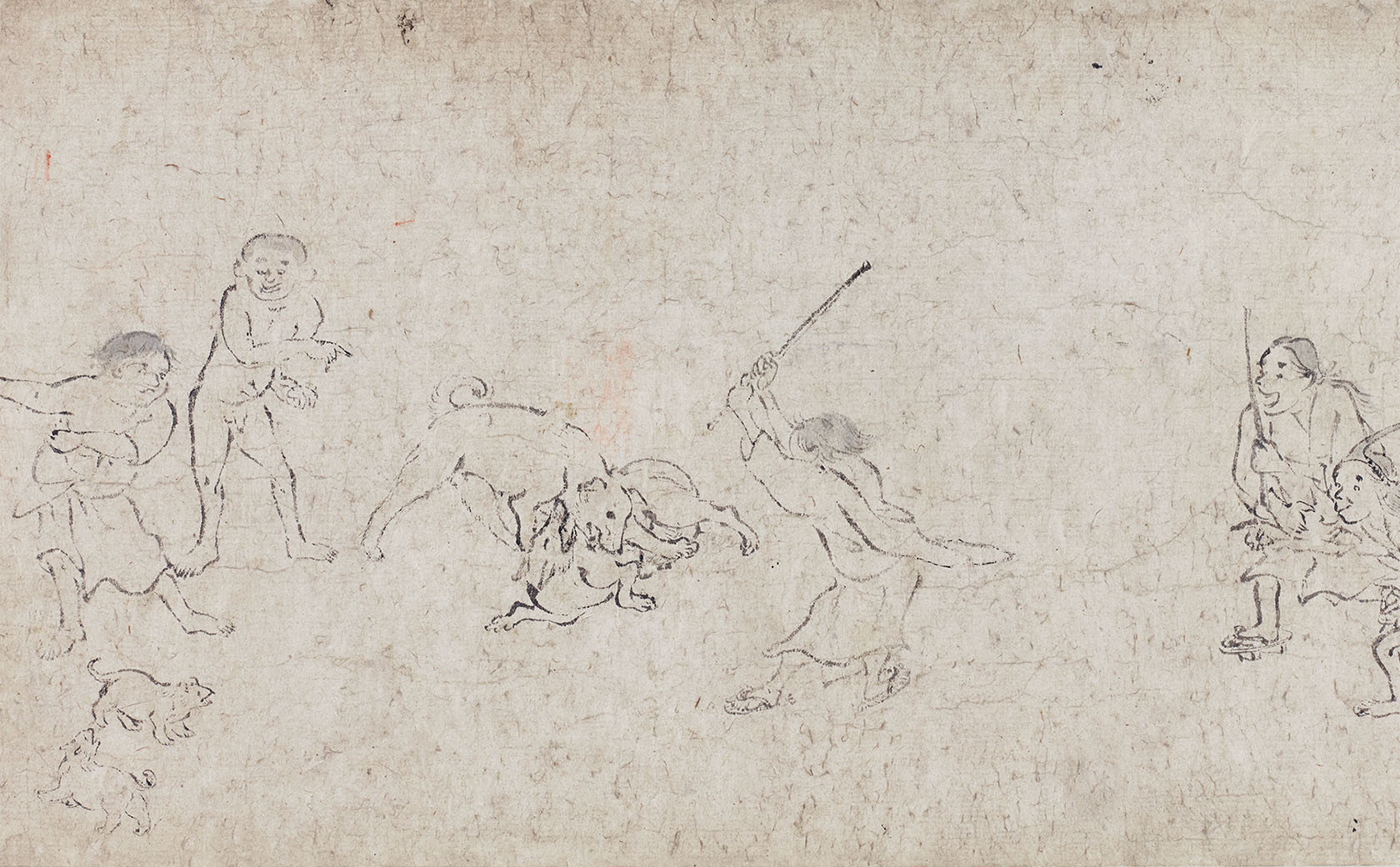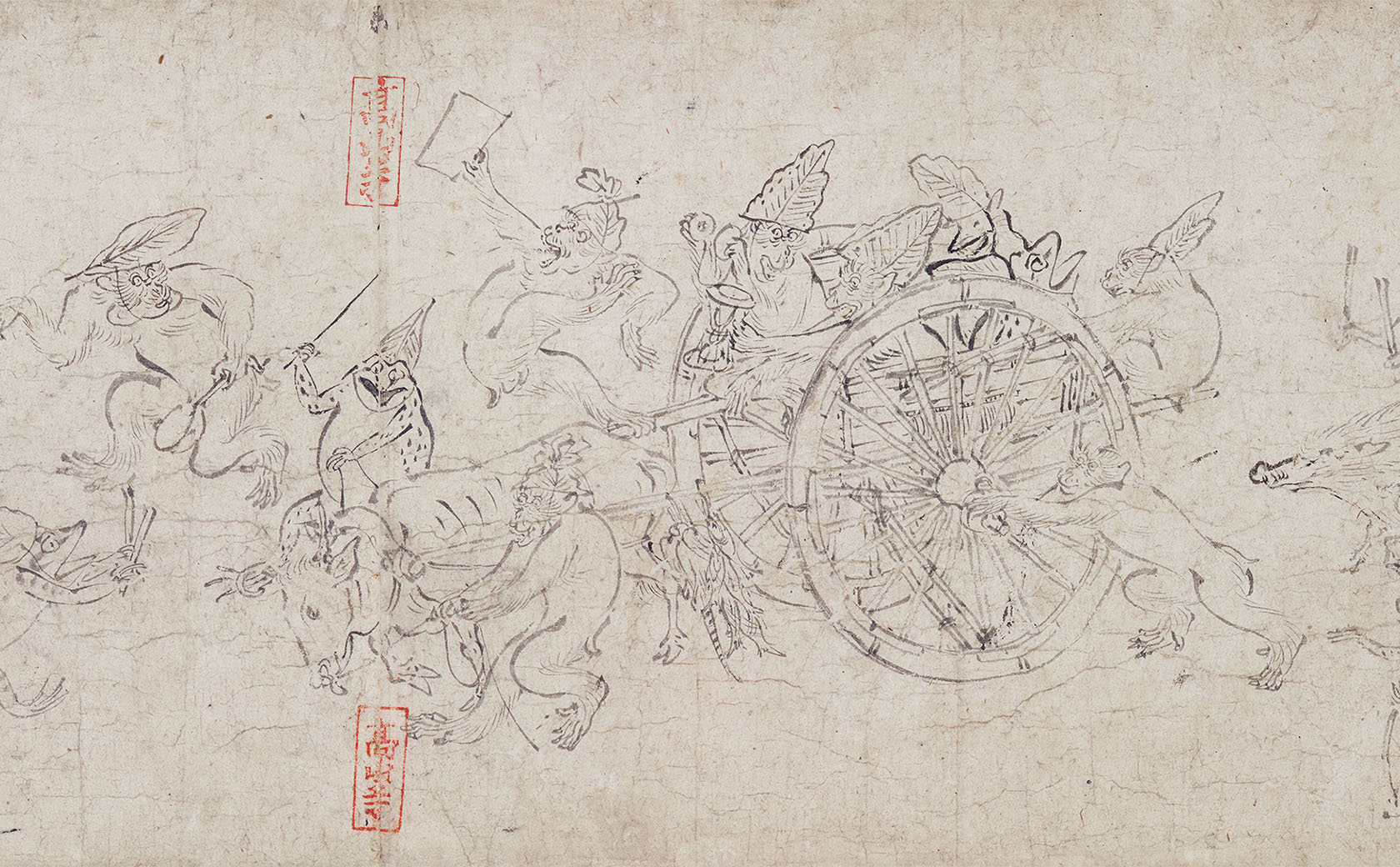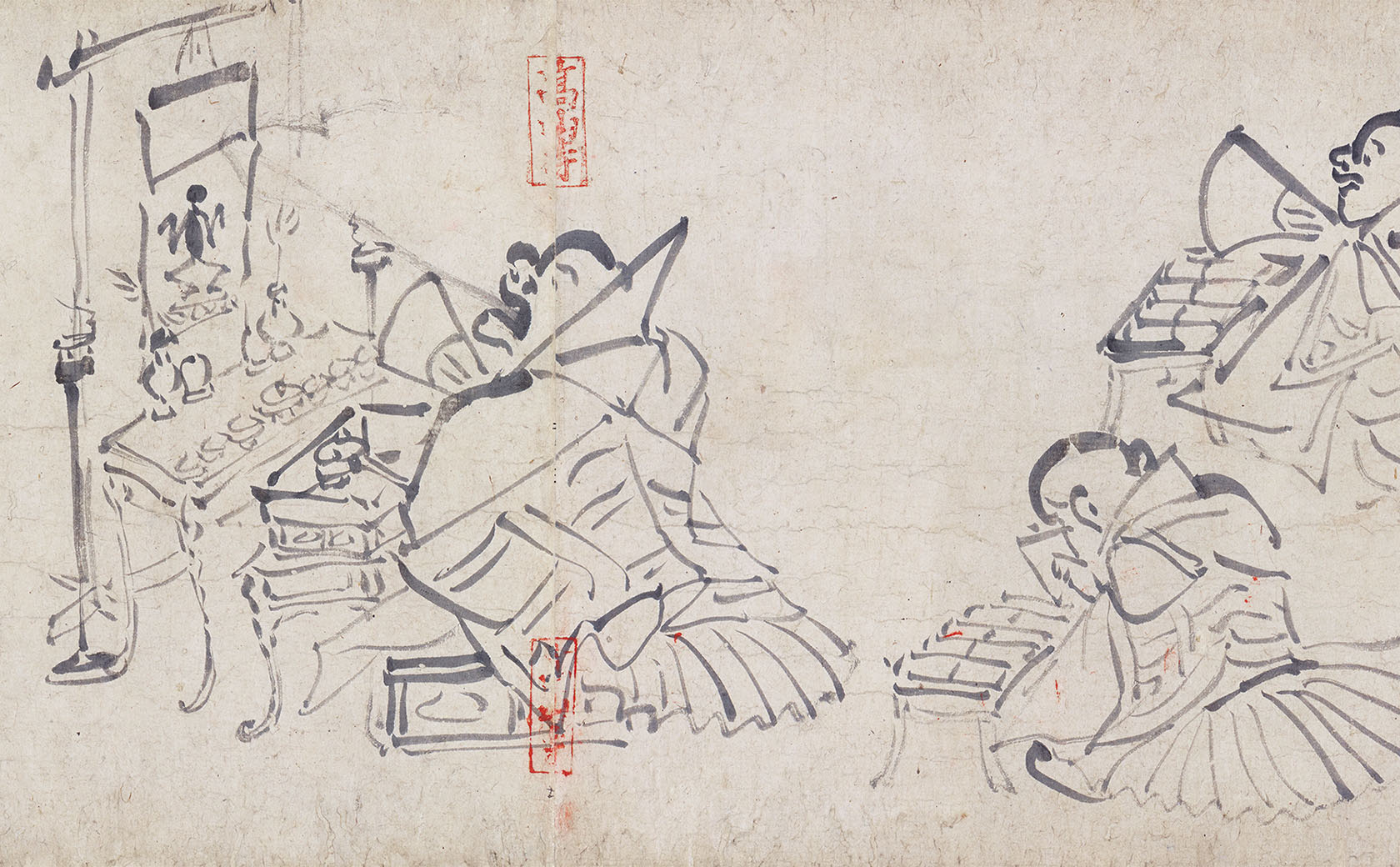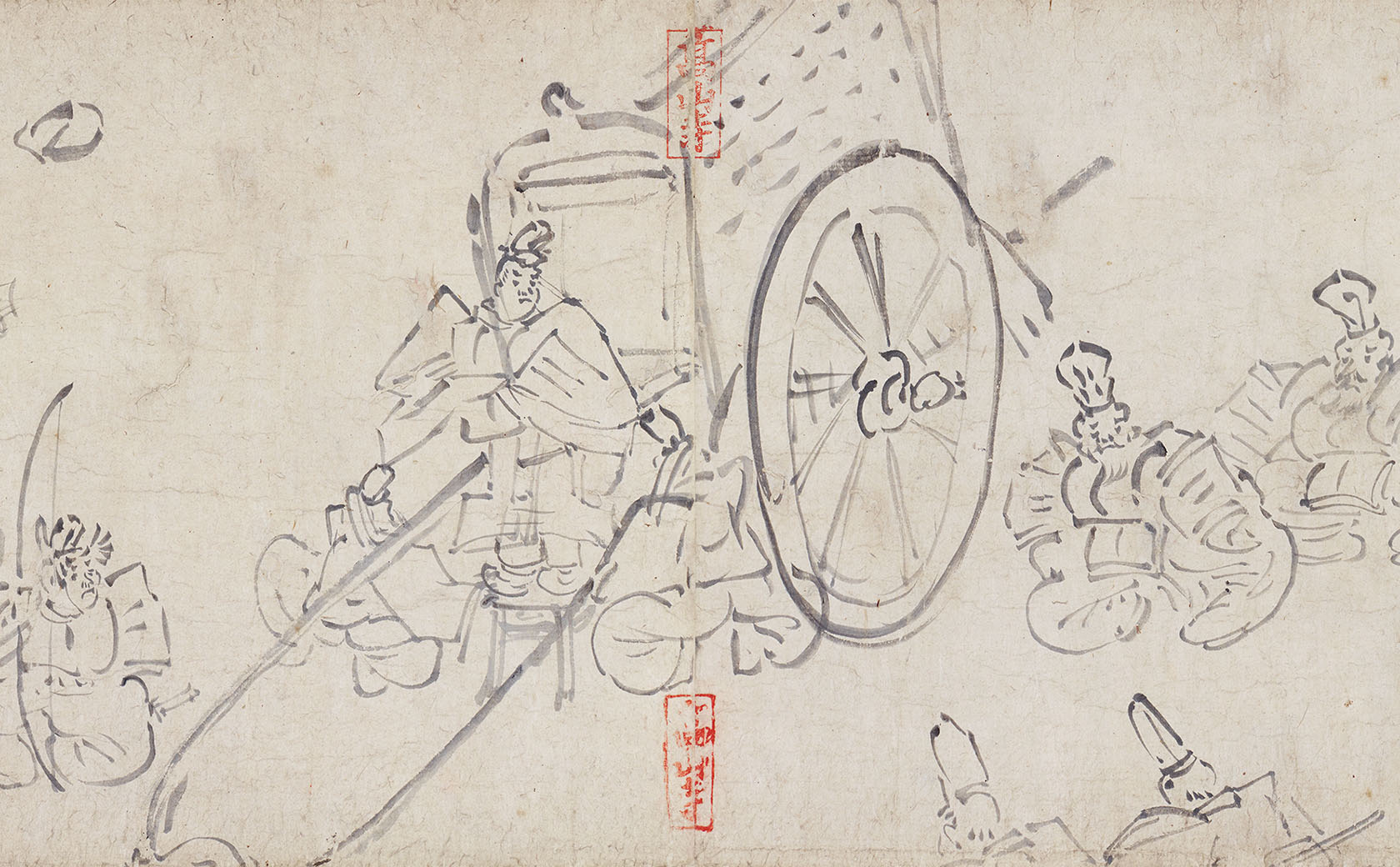Choju jinbutsu giga, a set of four scrolls from the twelfth and thirteenth centuries, is one of Japan’s most celebrated works of art. These black-and-white drawings of animals engaging in human activities have been hugely influential. There is no explanatory text, the artist is unknown, and parts are missing. Some attribute the work to the artist and priest Toba Sōjō (1053–1140), but there is no definitive proof.
Toba Sōjō
Lahir pada tahun 1053 dan meninggal dunia pada tahun 1140. Seorang sami pada lewat zaman Heian. Merupakan sami terkemuka yang pernah berkhidmat sebagai ketua Kuil Onjoji, juga sami besar mazhab Tendai. Dikatakan dia juga mempunyai bakat melukis.
Jilid 1, Ko:
The first scroll depicts various creatures bathing, preparing food, and attending a Buddhist memorial service. The animals include rabbits, frogs, and foxes. Notable scenes include a rabbit and a frog chasing a monkey, and a rabbit riding on a deer. A reproduction of this scroll is displayed at Sekisuiin, in the grounds of Kosanji Temple.
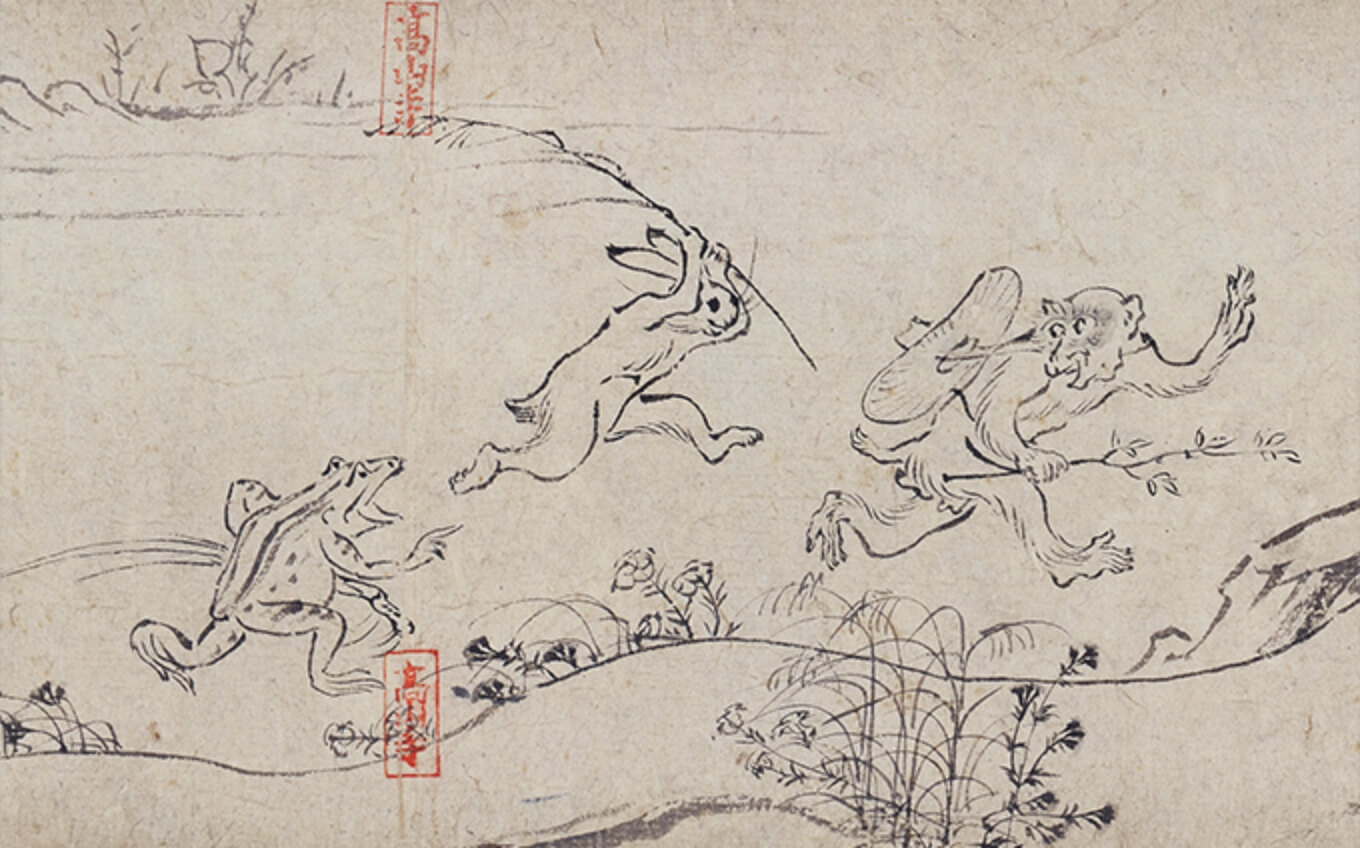
Jilid 1, Ko
Jilid 2, Otsu:
These scenes combine domestic animals including cows, chickens, and dogs; mythical creatures such as dragons and chimeras; and animals not native to Japan, including elephants and leopards.
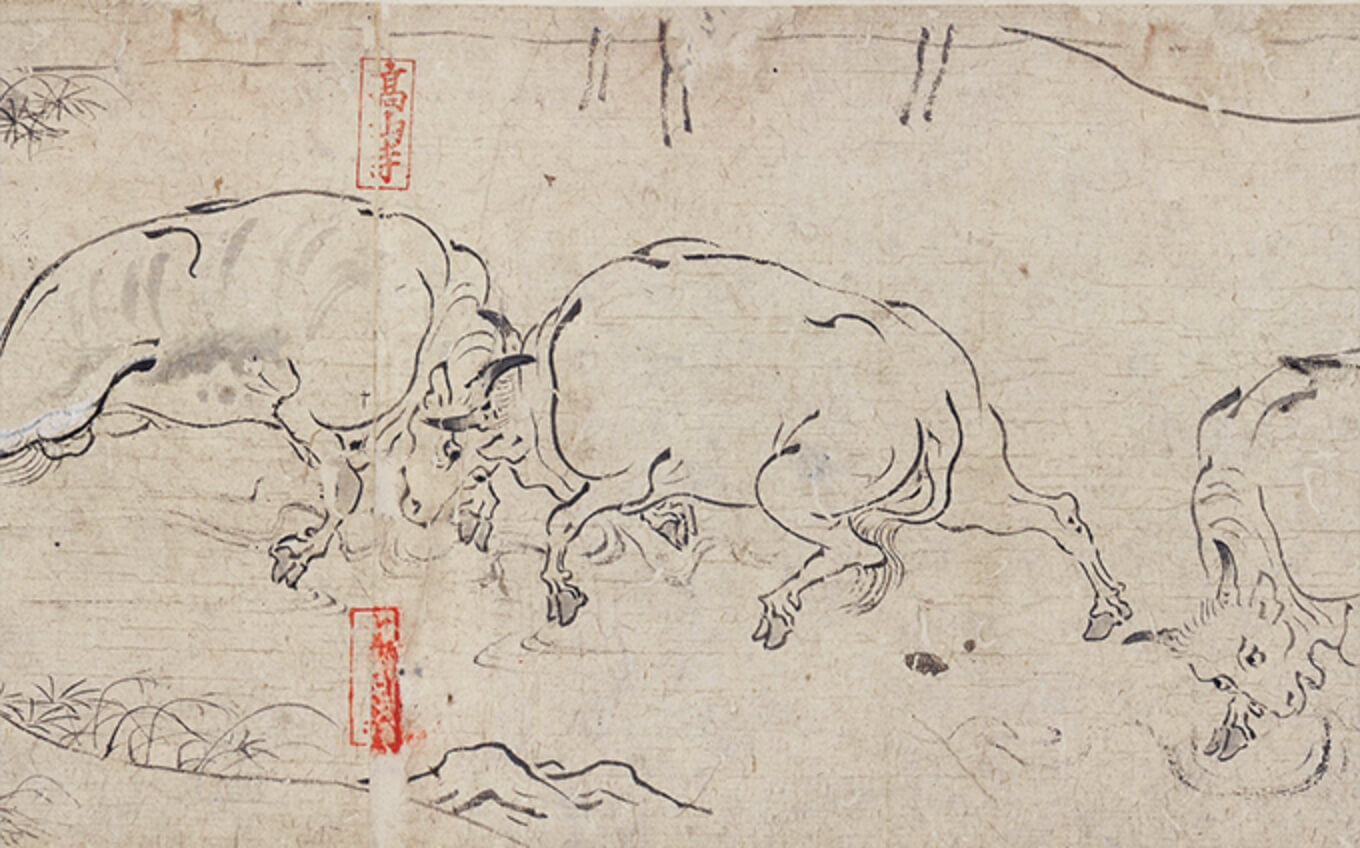
Jilid 2, Otsu
Jilid 3, Hei:
The first half of this scroll includes caricatures of people. The rest depicts animals engaging in human activities. One scene shows frogs and monkeys pulling an oxcart.
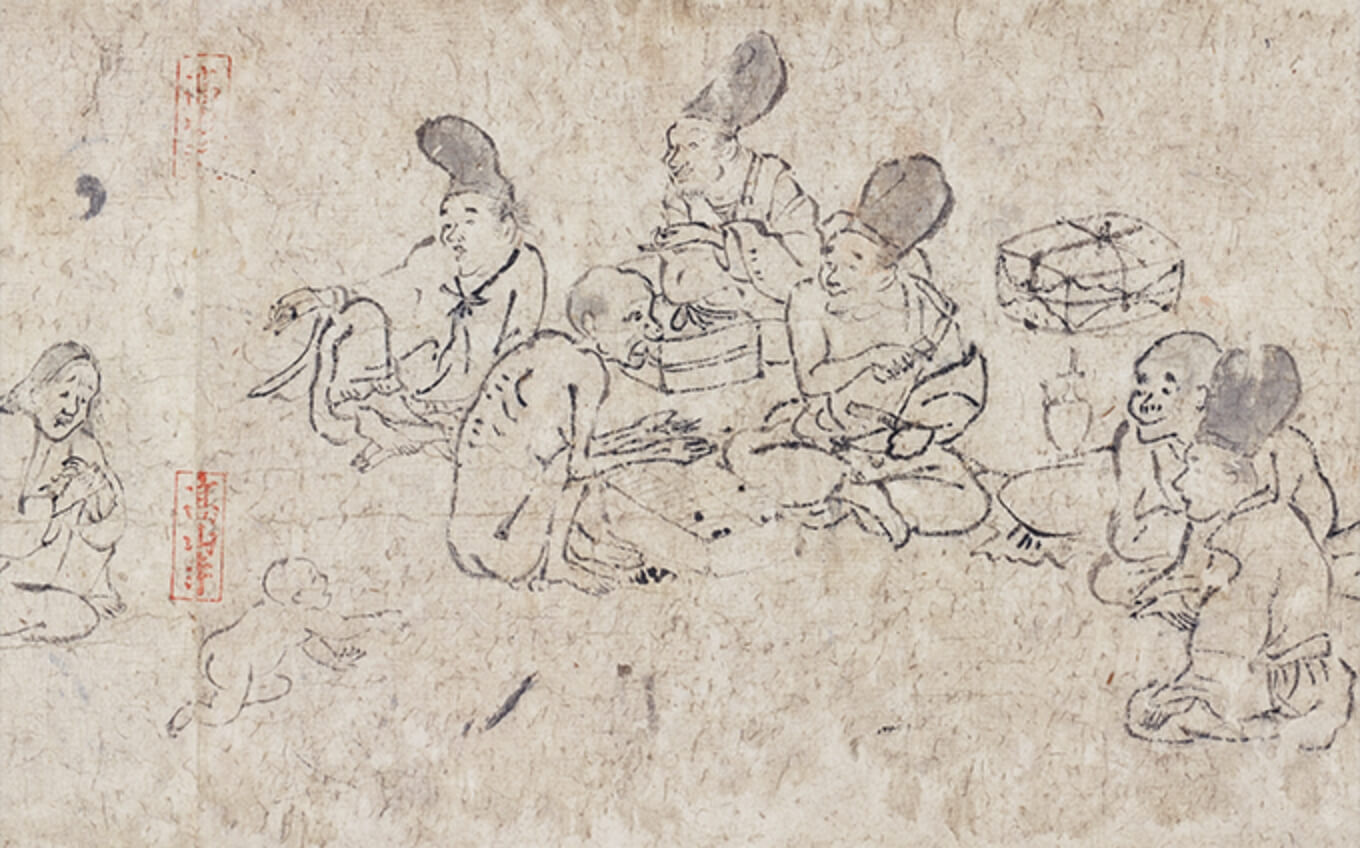
Jilid 3, Hei
Jilid 4, Tei:
This piece features satirical drawings of humans gambling, competing, and visiting the court of the emperor.



